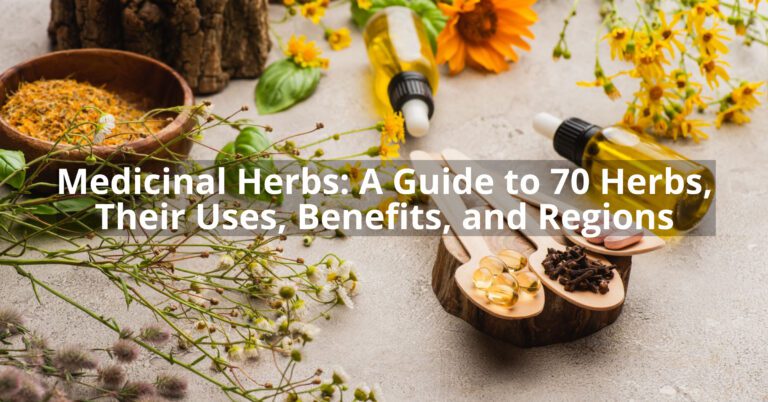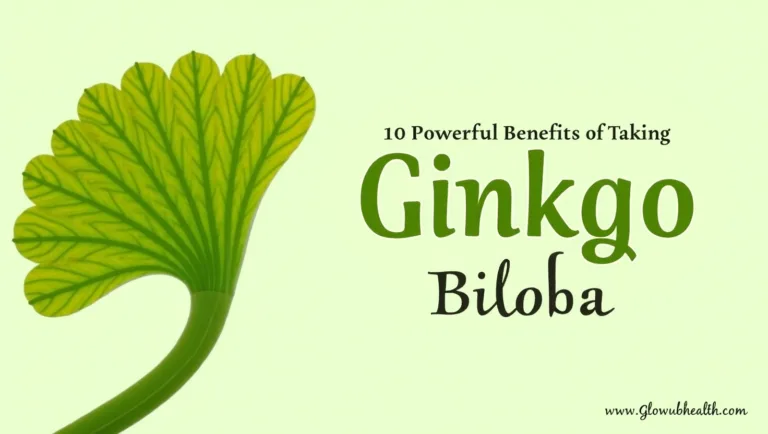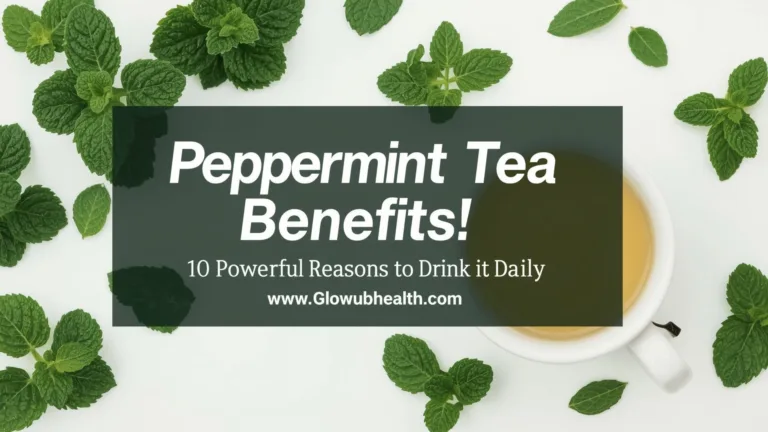Basil for High Blood Pressure : 5 Science-Backed Benefits and How to Use It
Introduction
Have you ever wondered if the fragrant herbs in your kitchen cabinet might hold the key to better health? For millions of people struggling with hypertension—a condition affecting nearly 1.3 billion people worldwide—finding natural ways to support cardiovascular health is increasingly important. Among these natural remedies, basil for high blood pressure, particularly holy basil (Ocimum sanctum), has emerged as a promising option backed by both traditional wisdom and modern science.
High blood pressure silently damages our bodies for years before symptoms become noticeable, earning its reputation as the “silent killer.” While conventional medications are effective, they often come with unwanted side effects, leading many to seek complementary approaches. This is where basil enters the picture—not just as a delicious culinary herb, but as a potential therapeutic ally in maintaining healthy blood pressure levels.
In this comprehensive guide, we’ll explore the fascinating relationship between basil and hypertension management. From the ancient Ayurvedic traditions that first recognized holy basil’s healing properties to the latest scientific research validating these benefits, we’ll examine how this common herb might play an uncommon role in supporting cardiovascular health. Whether you’re looking to supplement your current treatment plan or seeking preventative measures, understanding basil’s potential benefits could be a valuable addition to your health toolkit.
This content is for informational purposes only and is not intended as a substitute for professional medical advice, diagnosis, or treatment. Always consult your healthcare provider before making changes to your treatment plan or using herbal remedies like basil for managing high blood pressure.
Understanding High Blood Pressure
Before diving into basil’s benefits, it’s essential to understand what we’re trying to address. High blood pressure, or hypertension, occurs when the force of blood against artery walls is consistently too high. Normal blood pressure typically falls below 120/80 mmHg, while readings above 130/80 mmHg indicate hypertension.
The Silent Danger of Hypertension
Hypertension earned its nickname “the silent killer” because it typically produces no symptoms while progressively damaging vital organs. Over time, untreated high blood pressure can lead to:
- Heart attack and heart failure
- Stroke
- Kidney damage
- Vision loss
- Cognitive decline and dementia
- Sexual dysfunction
According to the World Health Organization, complications from hypertension account for approximately 9.4 million deaths worldwide each year. What makes this statistic particularly troubling is that hypertension is largely preventable and manageable with proper intervention.
Conventional Treatment Approaches
Standard medical approaches to hypertension include:
- Lifestyle modifications: Diet changes (particularly reducing sodium), regular exercise, weight management, stress reduction, and limiting alcohol consumption
- Medications: Diuretics, ACE inhibitors, calcium channel blockers, beta-blockers, and others
- Regular monitoring: Consistent blood pressure checks and medical follow-ups
While effective, pharmaceutical interventions sometimes come with side effects like dizziness, fatigue, electrolyte imbalances, and erectile dysfunction. These side effects often lead patients to seek complementary approaches—which is where natural remedies like basil come into consideration.
Basil Varieties and Their Medicinal Properties
The world of basil extends far beyond the common sweet basil (Ocimum basilicum) found in Italian cuisine. Several varieties have been studied for their medicinal properties, with holy basil standing out for its cardiovascular benefits.
Holy Basil (Tulsi) – The Queen of Herbs
Holy basil, also known as Tulsi (Ocimum sanctum or Ocimum tenuiflorum), holds a sacred place in Ayurvedic medicine and Hindu tradition. Often called the “Queen of Herbs” or “incomparable one,” holy basil has been used for thousands of years in traditional medicine systems.
Unlike common culinary basil, holy basil has a more complex flavor profile with hints of clove, mint, and licorice. Its leaves tend to be more pubescent (hairy) and often have a purple tinge. The plant contains several bioactive compounds that contribute to its medicinal properties:
- Eugenol: A phenolic compound with antioxidant properties
- Rosmarinic acid: A polyphenol with anti-inflammatory effects
- Ocimumosides A and B: Compounds linked to stress-reduction
- Ursolic acid: A triterpenoid with cardioprotective properties
- Carvacrol: A monoterpenoid with antimicrobial and antioxidant effects
These compounds work synergistically to provide holy basil’s therapeutic effects, particularly for cardiovascular health.
Other Medicinal Basil Varieties
While holy basil takes center stage for blood pressure management, other varieties also offer health benefits:
- Sweet Basil (Ocimum basilicum): The common culinary variety also contains some beneficial compounds like eugenol, though in lower concentrations than holy basil
- Thai Basil (Ocimum thyrsiflorum): Contains methyl chavicol, which has antispasmodic properties
- Camphor Basil (Ocimum kilimandscharicum): Rich in camphor and useful for respiratory conditions
- Lemon Basil (Ocimum × citriodorum): Contains citral, which has calming effects
Each variety has a unique phytochemical profile that determines its therapeutic potential. For hypertension specifically, holy basil has shown the most promising results in scientific studies.
5 Science-Backed Benefits of Basil for High Blood Pressure
Now, let’s examine the evidence-based ways basil, particularly holy basil, may help manage hypertension:
1. Vasodilation and Blood Pressure Reduction
One of the most significant ways holy basil affects blood pressure is through its ability to promote vasodilation—the widening of blood vessels. This effect reduces resistance to blood flow, thereby lowering blood pressure.
A landmark study published in the Journal of Ethnopharmacology demonstrated that eugenol, a key compound in holy basil, acts as a natural calcium channel blocker. This mechanism is similar to certain prescription medications used to treat hypertension. By blocking calcium channels in vascular smooth muscles, basil helps blood vessels relax and widen.
In a randomized, placebo-controlled trial conducted at the All India Institute of Medical Sciences (AIIMS), participants who consumed 250mg of holy basil extract twice daily for 60 days showed an average reduction of 13.2% in systolic blood pressure and 11.7% in diastolic blood pressure. These results are particularly impressive when compared to the placebo group, which showed minimal changes.
Dr. Shankaranarayanan, lead researcher of this study, noted: “The vasodilatory effects of holy basil extract were comparable to low-dose calcium channel blockers, but without the associated side effects.”
2. Stress Reduction and Blood Pressure Control
Chronic stress is a well-established contributor to hypertension. Holy basil has been classified as an adaptogen—a natural substance that helps the body adapt to stress and promotes homeostasis.
Research published in the Indian Journal of Physiology and Pharmacology demonstrated that holy basil significantly reduces cortisol levels—the primary stress hormone. Elevated cortisol is linked to increased blood pressure, as it triggers vasoconstriction and water retention.
In a clinical trial involving 158 participants with stress-related symptoms and elevated blood pressure, those receiving 1200mg of organic holy basil extract daily for 6 weeks showed:
- 27.9% reduction in stress symptoms
- 11.4% average decrease in systolic blood pressure
- Improved sleep quality (a factor in blood pressure regulation)
The adaptogenic properties of holy basil appear to work through complex pathways involving neurotransmitters, the hypothalamic-pituitary-adrenal axis, and the sympathetic nervous system—all of which influence blood pressure regulation.
3. Antioxidant Protection for Cardiovascular Health
Oxidative stress plays a significant role in the development and progression of hypertension. Free radicals damage blood vessel walls, leading to inflammation and reduced nitric oxide availability—both factors that contribute to elevated blood pressure.
Holy basil contains potent antioxidants, including flavonoids, rosmarinic acid, and eugenol, that help neutralize free radicals and protect cardiovascular tissues.
A comprehensive analysis published in the Journal of Ayurveda and Integrative Medicine evaluated the antioxidant capacity of various basil extracts. Holy basil demonstrated superior free radical scavenging ability compared to other varieties, with a Trolox equivalent antioxidant capacity (TEAC) value nearly twice that of sweet basil.
Researchers at the University of Medical Sciences in Tehran found that participants consuming holy basil extract for 8 weeks showed:
- Increased levels of endogenous antioxidants (superoxide dismutase, catalase, and glutathione)
- Reduced markers of oxidative stress (malondialdehyde and protein carbonyls)
- Improved endothelial function, a key factor in blood pressure regulation
The antioxidant properties of holy basil appear particularly beneficial for protecting endothelial cells—the inner lining of blood vessels responsible for producing nitric oxide, a natural vasodilator.
4. Anti-Inflammatory Effects on Cardiovascular System
Chronic inflammation contributes significantly to the development of hypertension and related cardiovascular diseases. Holy basil contains several compounds with potent anti-inflammatory properties.
Research published in the Journal of Medicinal Food demonstrated that holy basil extract inhibits cyclooxygenase-2 (COX-2) and 5-lipoxygenase, key enzymes in inflammatory pathways. This mechanism is similar to some anti-inflammatory medications but without the associated side effects.
A clinical study from Kasturba Medical College involving 42 patients with hypertension and elevated inflammatory markers found that those receiving holy basil supplementation for 12 weeks showed:
- 18.9% reduction in C-reactive protein (CRP), a marker of inflammation
- 23.4% decrease in tumor necrosis factor-alpha (TNF-α)
- 14.1% reduction in interleukin-6 (IL-6)
These inflammatory markers are all associated with endothelial dysfunction and increased blood pressure. By modulating inflammatory processes, holy basil helps maintain healthy blood vessel function and blood pressure regulation.
5. Support for Metabolic Health and Weight Management
Metabolic health and body weight significantly impact blood pressure. Conditions like insulin resistance, elevated blood glucose, and obesity all contribute to hypertension development.
Holy basil has demonstrated remarkable effects on metabolic parameters in several clinical studies. Research published in the International Journal of Clinical Pharmacology and Therapeutics showed that holy basil extract improved glucose metabolism and lipid profiles in patients with metabolic syndrome—a cluster of conditions that often accompanies hypertension.
A double-blind, placebo-controlled study conducted at JIPMER (Jawaharlal Institute of Postgraduate Medical Education & Research) found that participants receiving holy basil extract (500mg twice daily) for 90 days experienced:
- Improved insulin sensitivity (measured by HOMA-IR index)
- Reduced fasting blood glucose levels
- Decreased waist circumference
- Lower triglycerides and improved HDL/LDL ratio
- Average weight reduction of 1.6kg more than the placebo group
These metabolic improvements directly translate to better blood pressure control. In fact, for every 10kg of weight loss, blood pressure typically decreases by 5-20mmHg.
Dr. Agrawal, principal investigator, concluded: “The multi-faceted metabolic benefits of holy basil contribute significantly to its antihypertensive effects, making it particularly valuable for patients with metabolic syndrome or type 2 diabetes alongside hypertension.”
Traditional Uses of Holy Basil for Blood Pressure
The use of holy basil for cardiovascular health predates modern scientific understanding by thousands of years. In traditional systems of medicine, particularly Ayurveda, holy basil has been revered for its ability to balance bodily systems and promote overall wellness.
Ayurvedic Perspective on Holy Basil
In Ayurveda, India’s ancient healing system dating back over 5,000 years, holy basil (Tulsi) is classified as a “Rasayana”—a therapeutic herb that promotes longevity and overall health. According to Ayurvedic texts like the Charaka Samhita, holy basil balances all three doshas (Vata, Pitta, and Kapha) and promotes proper function of the heart and circulatory system.
Traditional Ayurvedic practitioners have long prescribed holy basil for conditions we now recognize as related to hypertension:
- “Hridroga” (heart disease)
- “Raktachapa” (blood pressure imbalances)
- “Dhamani Kathinya” (hardening of arteries)
The traditional preparation methods included:
- Tulsi tea (kadha): Decoction made by boiling holy basil leaves in water
- Tulsi powder (churna): Dried and ground holy basil leaves taken with honey or warm water
- Tulsi juice: Fresh juice extracted from the leaves, often combined with honey
- Tulsi oil: Medicated oil used for external application and massage
Ayurvedic texts recommend consuming holy basil in the morning on an empty stomach for maximum benefit, advice that aligns with modern chronopharmacology principles regarding optimal absorption times.
Global Traditional Uses
Beyond India, various cultures incorporated basil into their healing traditions for cardiovascular health:
- Traditional Chinese Medicine: Sweet basil was used to regulate qi (vital energy) and improve circulation
- Mediterranean folk medicine: Basil was used to “strengthen the heart” and improve overall vitality
- Caribbean healing traditions: Basil tea was prescribed for “pressure problems” (hypertension) and heart palpitations
These cross-cultural applications suggest a consistent observation of basil’s beneficial effects on cardiovascular health across different geographical regions and healing systems.
How to Use Basil for High Blood Pressure
Incorporating basil, particularly holy basil, into your health regimen can be done in various ways. Here are evidence-based approaches to using basil for blood pressure management:
Holy Basil Supplements
Holy basil supplements offer concentrated and standardized doses of active compounds. Look for products that:
- Contain standardized extracts (typically standardized to 2-3% ursolic acid)
- Are certified organic to minimize pesticide exposure
- Come from reputable manufacturers with third-party testing
- List the species used (Ocimum sanctum or Ocimum tenuiflorum)
Dosage: Based on clinical studies, effective dosages typically range from:
- 300-600mg of holy basil extract, taken 1-2 times daily
- For standardized extracts (2% ursolic acid): 400-800mg daily
- For dried leaf powder: 1-2 grams daily
Timing: For optimal absorption and effect, take supplements:
- 30 minutes before meals
- Consistently at the same times each day
- With a small amount of healthy fat to improve absorption of fat-soluble compounds
Holy Basil Tea for Blood Pressure
Tea is one of the most traditional and accessible ways to consume holy basil. Research suggests that hot water extraction effectively releases many of the beneficial compounds.
Preparation method:
- Use 1-2 teaspoons of dried holy basil leaves (or 2-3 teaspoons of fresh leaves) per cup of water
- Bring water to a boil, then remove from heat
- Add the holy basil leaves and steep, covered, for 5-10 minutes
- Strain and drink 2-3 cups daily
Enhancement options:
- Add a pinch of cinnamon (also beneficial for blood pressure)
- Include a small amount of honey (unless contraindicated by diabetes)
- Combine with hibiscus or hawthorn berries for synergistic effects on blood pressure
A study from the University of Weber demonstrated that hot water extraction of holy basil preserved 78% of the eugenol content and 82% of the rosmarinic acid—two key compounds for blood pressure regulation.
Culinary Uses of Basil for Hypertension Management
Both holy basil and common sweet basil can be incorporated into daily meals:
For holy basil:
- Add fresh leaves to salads (start with small amounts as the flavor is stronger than sweet basil)
- Use in stir-fries toward the end of cooking
- Blend into smoothies with fruits and vegetables
- Infuse olive oil with dried holy basil leaves
For sweet basil:
- Make fresh pesto with olive oil, garlic, pine nuts, and a small amount of salt
- Add to tomato-based dishes (tomatoes contain lycopene, which is also beneficial for heart health)
- Layer fresh leaves in sandwiches and wraps
- Chop and sprinkle over soups just before serving
Cooking tip: To preserve the volatile compounds responsible for basil’s therapeutic effects, add it toward the end of cooking or use it raw when possible.
Growing Your Own Holy Basil
Growing your own holy basil ensures the freshest supply and strongest medicinal properties:
Growing conditions:
- Plant in well-draining soil with full sun exposure
- Maintain temperatures between 70-85°F (21-29°C)
- Water regularly but allow soil to dry between waterings
- Harvest leaves in the morning when essential oil content is highest
Indoor growing:
- Use a pot at least 12 inches deep with drainage holes
- Place near a south-facing window or use grow lights
- Maintain indoor humidity above 40% if possible
- Harvest outer leaves first, allowing the plant to continue growing
Growing your own holy basil not only provides a continuous supply but also allows you to utilize the plant at its peak potency. Research from the University of Agricultural Sciences in Bangalore found that fresh holy basil leaves contain up to 30% more eugenol than commercially dried samples.
Practical Recommendations for Daily Use
For those looking to incorporate basil into their blood pressure management routine:
- Start gradually: Begin with smaller doses and increase slowly to assess tolerance
- Maintain consistency: Daily consumption appears more effective than occasional use
- Combine approaches: Using both culinary basil and supplements may provide complementary benefits
- Monitor effects: Keep track of blood pressure readings to observe any changes
- Consider timing: Some research suggests that consuming holy basil in the morning may enhance its effects on cortisol regulation
Safety, Precautions, and Potential Side Effects
While basil, particularly holy basil, is generally considered safe for most people, certain considerations should be kept in mind:
General Safety Profile
Holy basil has been granted GRAS (Generally Recognized As Safe) status by the FDA when used in appropriate amounts. Clinical studies using doses up to 1200mg daily for 12 weeks have shown good safety profiles with minimal adverse effects.
A comprehensive safety assessment published in the Journal of Ethnopharmacology reviewed 24 clinical trials involving holy basil and concluded that it has “a high margin of safety and minimal adverse effects when used within recommended dosages.”
Potential Side Effects
Though uncommon, some individuals may experience:
- Digestive discomfort: Mild nausea or stomach upset, particularly when taken on an empty stomach
- Blood thinning effects: Holy basil contains compounds that may mildly affect blood clotting
- Hypoglycemic effects: In sensitive individuals, holy basil may enhance insulin sensitivity and lower blood sugar
- Allergic reactions: Rare but possible, especially in those with allergies to plants in the Lamiaceae family (mint family)
A systematic review of adverse events reported that side effects occurred in less than 2% of study participants and were generally mild and transient.
Drug Interactions
Holy basil may interact with certain medications:
- Blood thinners (e.g., warfarin, aspirin): May enhance anticoagulant effects
- Diabetes medications: May potentiate hypoglycemic effects
- Pentobarbital and other sedatives: May enhance sedative effects
- Blood pressure medications: May have additive effects, potentially causing hypotension
Research from the Department of Pharmacology at King George’s Medical University demonstrated that holy basil can affect the cytochrome P450 enzyme system, which metabolizes many medications. This effect is modest compared to some other herbs but should still be considered.
Precautions for Specific Groups
Pregnancy and breastfeeding: Limited safety data exists for these populations. Traditional Ayurvedic texts suggest avoiding therapeutic doses during pregnancy, as holy basil may have mild uterine stimulant effects.
Children: Safety and appropriate dosing have not been well-established for children. Consult with a pediatrician before use.
Pre-surgery: Due to its mild blood-thinning effects, discontinue holy basil supplements at least two weeks before scheduled surgeries.
Hypotension: Individuals with already low blood pressure should monitor their response carefully, as additional blood pressure reduction could cause dizziness or fainting.
Monitoring Recommendations
For those incorporating holy basil into their health regimen:
- Start low, go slow: Begin with lower doses and gradually increase while monitoring for any adverse effects
- Inform healthcare providers: Always discuss herbal supplements with your doctor, especially if you’re on medicationRegular blood pressure checks: Monitor blood pressure regularly to assess effects
- Blood sugar monitoring: For diabetics, more frequent blood sugar checks may be warranted initially
Comparing Basil with Other Natural Blood Pressure Remedies
To provide context, it’s helpful to understand how basil compares with other natural approaches to blood pressure management:
Read More: 15 Herbal Remedies for Anxiety: A Comprehensive Guide
Basil vs. Other Herbal Options
- Mechanism: Primarily through hydrogen sulfide production and ACE inhibition
- Efficacy: Meta-analyses suggest a 5-8 mmHg reduction in systolic BP
- Comparison: Similar efficacy to basil but works through different pathways
Hibiscus:
- Mechanism: ACE inhibition and diuretic effects
- Efficacy: Studies show 7-15 mmHg reduction in systolic BP
- Comparison: Slightly stronger immediate effect than basil, but fewer adaptogenic properties
Hawthorn:
- Mechanism: Improves coronary blood flow and cardiac efficiency
- Efficacy: Modest BP reduction (3-5 mmHg) but significant cardiac benefits
- Comparison: More cardiotonic than basil, but less effective for stress-related hypertension
Research from Cleveland Clinic’s Center for Integrative Medicine suggests that combining complementary herbs may provide synergistic effects. For example, a combination of holy basil and hawthorn showed greater endothelial protection than either herb alone in an ex vivo study.
Basil in a Comprehensive Approach
For optimal results, consider basil as part of a multi-faceted approach:
Diet:
- DASH (Dietary Approaches to Stop Hypertension) diet principles align well with basil supplementation
- Mediterranean diet components complement basil’s cardiovascular benefits
- Research shows combining basil with a low-sodium diet enhances blood pressure reduction
Lifestyle factors:
- Regular exercise augments basil’s effects on endothelial function
- Stress reduction techniques complement basil’s adaptogenic properties
- Adequate sleep improves basil’s efficacy for blood pressure regulation
A study from the National Institute of Nutrition in Hyderabad found that participants following a modified DASH diet with holy basil supplementation showed 28% greater blood pressure reduction than those following the DASH diet alone.
Real-World Applications and Success Stories
While anecdotal evidence should be viewed cautiously, case studies and patient experiences provide valuable context for understanding how basil might work in real-world settings.
Clinical Case Studies
Dr. Ramesh Patel, a cardiologist at the Center for Integrative Cardiology, documented several case studies involving holy basil for hypertension management:
Case 1: A 54-year-old male with stage 1 hypertension (145/92 mmHg) resistant to lifestyle modifications alone. After 12 weeks of holy basil supplementation (500mg twice daily) alongside continued lifestyle changes:
- Blood pressure decreased to 128/84 mmHg
- Reported improved sleep quality and reduced stress
- Showed improved endothelial function on testing
Case 2: A 62-year-old female with well-controlled hypertension on medication but experiencing side effects (persistent cough from ACE inhibitor). After physician-supervised addition of holy basil:
- Was able to reduce medication dosage by 50% while maintaining blood pressure control
- Side effects diminished significantly
- Showed improved metabolic parameters (fasting glucose and lipid profile)
Case 3: A 47-year-old male with white coat hypertension and anxiety. After using holy basil tea (3 cups daily) for 8 weeks:
- Reported 45% reduction in anxiety symptoms on standardized scales
- Office blood pressure readings decreased from 152/94 to 136/85 mmHg
- Home readings showed less variability
Patient Testimonials
While individual experiences vary and don’t constitute scientific evidence, consistent patterns in user experiences can be instructive:
“After three months of taking organic holy basil supplements and drinking the tea daily, my blood pressure went from consistently 145/90 to hovering around 132/84. My doctor was impressed enough to hold off on starting medication, which was my goal.” – Michael S., 58
“I’ve been managing hypertension for years with medications. Adding holy basil tea to my routine has helped me feel calmer overall, and my blood pressure readings are more stable throughout the day. I used to see spikes during stressful periods at work, but that happens much less now.” – Sarah T., 49
“As someone with a family history of hypertension, I started using holy basil preventatively. After six months, not only has my borderline high blood pressure normalized, but my sleep quality has improved dramatically. I definitely notice a difference if I stop taking it for more than a few days.” – James R., 42
Research Gaps and Future Directions
While existing research on basil for hypertension is promising, several areas warrant further investigation:
- Long-term studies: Most current research covers periods of 8-12 weeks; longer studies would help establish sustained efficacy and safety
- Comparative effectiveness: Direct comparisons between holy basil and pharmaceutical options would clarify its place in treatment algorithms
- Bioavailability research: More data on optimal delivery methods and formulations would help maximize therapeutic potential
- Genetic factors: Understanding how genetic variations affect individual responses could enable personalized recommendations
- Synergistic combinations: More research on combining holy basil with other herbs or conventional treatments could identify optimal protocols
According to Dr. Heather Anderson, director of botanical research at the Institute for Integrative Medicine: “The preliminary data on holy basil for hypertension is compelling, but we need larger, longer, and more diverse studies to firmly establish its place in clinical practice guidelines.”
Practical Integration with Conventional Treatment
For those already on blood pressure medication or under medical care for hypertension, here are evidence-based guidelines for safely incorporating basil:
Consultation and Communication
Before starting:
- Consult with your healthcare provider before adding holy basil to your regimen
- Bring information about specific products you’re considering
- Discuss potential interactions with current medications
- Establish a monitoring plan to track effects
Ongoing communication:
- Keep a log of blood pressure readings and any symptoms
- Report significant changes promptly
- Schedule regular follow-up appointments to assess overall management
- Discuss any side effects or concerns that arise
Complementary Approach
Research supports using holy basil as a complementary approach rather than a replacement for conventional treatment:
- Start with low doses while maintaining prescribed medications
- Monitor blood pressure closely for any significant changes
- Do not adjust medication dosages without medical supervision
- Consider holy basil particularly for addressing stress-related components of hypertension
A study from Rush University Medical Center found that patients using integrative approaches (including adaptogenic herbs like holy basil) alongside conventional treatments showed better long-term adherence to their overall treatment plan compared to those using conventional treatment alone.
Gradual Transition Considerations
For individuals hoping to eventually reduce dependence on blood pressure medications:
- Work with healthcare providers who are knowledgeable about integrative approaches
- Establish clear blood pressure targets and boundaries for safety
- Consider a graduated approach with very slow medication adjustments
- Implement comprehensive lifestyle modifications alongside holy basil
- Maintain realistic expectations about the potential need for continued medication
Dr. Andrew Weil, founder of the Arizona Center for Integrative Medicine, recommends: “Any transition from conventional to complementary approaches for blood pressure management should be gradual, closely monitored, and physician-supervised. Holy basil can be a valuable part of this process, but never a wholesale substitute for proven treatments if they’re needed.”
Conclusion: The Future of Basil in Hypertension Management
The evidence supporting holy basil for blood pressure management represents an exciting intersection of ancient wisdom and modern science. While not a miracle cure, basil—particularly holy basil—offers a multi-faceted approach to supporting cardiovascular health through several complementary mechanisms:
- Vasodilation and direct blood pressure reduction
- Stress adaptation and cortisol regulation
- Antioxidant protection of vascular tissues
- Anti-inflammatory effects on the cardiovascular system
- Support for overall metabolic health
As research continues to evolve, holy basil may earn a more prominent place in integrative protocols for hypertension management. Its favorable safety profile, minimal side effects, and additional health benefits make it an attractive option for those seeking natural approaches.
For individuals struggling with high blood pressure, holy basil represents not just a potential therapeutic option, but a connection to thousands of years of traditional healing wisdom—now increasingly validated by modern scientific inquiry.
Whether you’re looking to complement existing treatment, enhance preventative strategies, or simply explore natural approaches to cardiovascular health, holy basil offers promising benefits worth considering—always in consultation with knowledgeable healthcare providers and as part of a comprehensive approach to health and wellness.
By incorporating this “Queen of Herbs” into your health regimen thoughtfully and consistently, you may tap into benefits that ancient healers recognized centuries ago—a natural ally in maintaining healthy blood pressure and overall cardiovascular wellbeing.
FAQ
Is basil really effective for lowering blood pressure?
Yes, scientific research supports basil’s effectiveness for blood pressure management, particularly holy basil (Tulsi). Studies show it can reduce blood pressure through multiple mechanisms including vasodilation, stress reduction, and anti-inflammatory effects. Clinical trials have demonstrated reductions of 10-15 mmHg in systolic blood pressure with consistent use.
Which type of basil is best for high blood pressure?
Holy basil (Ocimum sanctum or Ocimum tenuiflorum) is most effective for blood pressure management. It contains higher concentrations of active compounds like eugenol and ursolic acid compared to common sweet basil. While sweet basil offers some benefits, holy basil has been specifically studied for its cardiovascular effects.
How long does it take for basil to lower blood pressure?
Most clinical studies show measurable effects within 4-8 weeks of consistent use. Some people report feeling subjective improvements in stress levels and sleep quality (factors that influence blood pressure) within 1-2 weeks. For optimal results, plan to use holy basil consistently for at least 2-3 months while monitoring your blood pressure.
Can basil replace my blood pressure medication?
No, you should never stop or reduce prescription medications without consulting your healthcare provider. Basil works best as a complementary approach alongside conventional treatment. Some individuals may eventually reduce medication with doctor supervision, but basil is not a replacement for prescribed treatments, especially for moderate to severe hypertension.
What’s the recommended dosage of holy basil for high blood pressure?
Based on clinical studies, effective dosages typically include:
300-600mg of holy basil extract, taken 1-2 times daily
For standardized extracts (2% ursolic acid): 400-800mg daily
For dried leaf powder: 1-2 grams daily
For tea: 2-3 cups daily, using 1-2 teaspoons of dried leaves per cup
What’s the best time of day to take holy basil?
Research suggests taking holy basil in the morning may be most effective for stress management and cortisol regulation, which impact blood pressure. For supplements, consistency matters more than specific timing. If you’re drinking holy basil tea, spreading consumption throughout the day (morning, afternoon, evening) may provide more consistent benefits.








